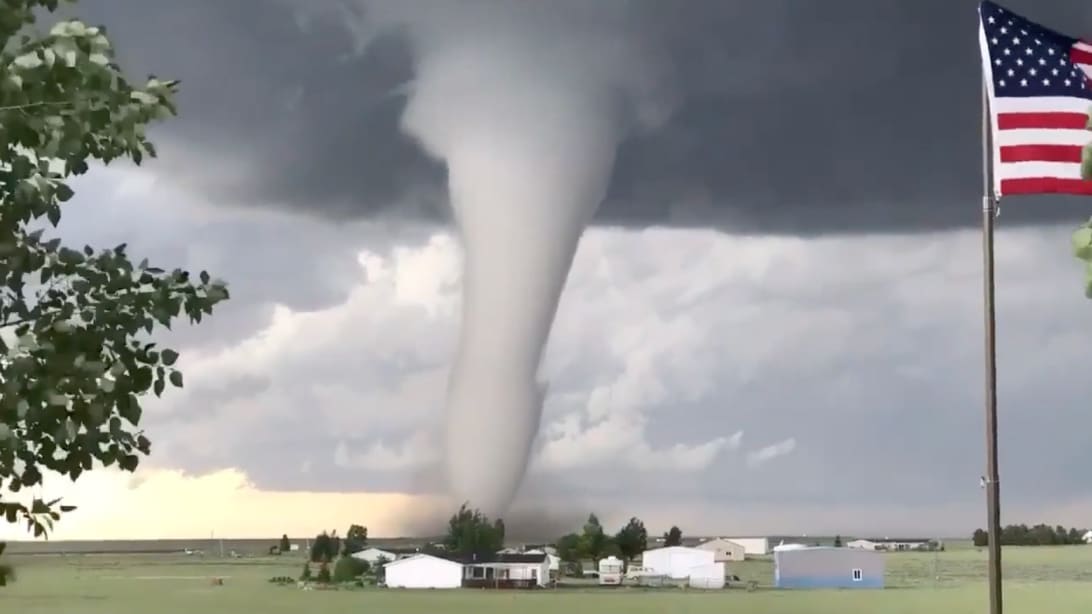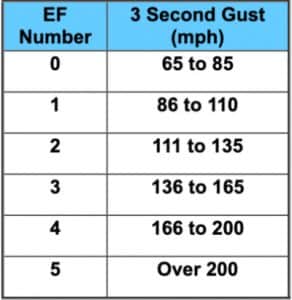Severe weather season is upon us. With meteorologists predicting a more dangerous season than usual in 2023, it’s important to know how to keep yourself safe during a tornado.
When is tornado season?
According to the National Weather service, peak tornado season for the southern plains is May – June, though those states often see severe weather as early as March. States bordering the Gulf of Mexico experience most of their severe tornadic storms earlier in the spring. States in the northern plains and upper midwest, including North and South Dakota, Nebraska, Iowa, and Minnesota, historically peak in June or July.
How are tornadoes rated?
Tornadoes vary greatly in size, strength and travel speed. Some have been recorded at only a few yards wide, while others can swell to over a mile wide.
NWS says that the size and shape of a tornado doesn’t indicate it’s strength, but all should be treated as extremely dangerous.
Twisters are divided into five classes based on the Enhanced F-Scale. Since the exact wind speeds are ground level are impossible to measure, tornadoes are given a scale rating based on damage left in their wake. Meteorologists are able to provide a practical estimate of wind speed based on a damage survey.
11 ways to protect yourself from a tornado.
-
- Get educated! Study your state and county maps to familiarize yourself with county names, street names and the towns surrounding you.
- Invest in a battery-operated weather radio in case there is a power outage or cell phone disruption in your area. You need a way to receive warnings during these dangerous storm situations.
- Identify a community shelter or a safe place in your home. Safe rooms are often available in communities where tornadoes frequently touch down. Contact your local city hall to find out if your community has one and where it is located. These rooms are often at a local school, fire station or library. If seeking shelter in your home, the safest location would be a basement, storm cellar, or an interior room on the lowest floor with no windows.
- Protect your head and torso by covering yourself with a mattress, or get under something sturdy like a table or workbench.
- A day or two prior to severe weather moving into your area, move or secure outdoor furniture, trampolines, trash cans, etc. that could become a projectile during a tornado.
- Don’t drive toward a tornado or into the path of one. Tornadoes are known to change direction or speed without warning. If you find yourself driving with a tornado headed toward you, the National Weather Service suggest that you “drive at right angles away from the tornado or get out of your vehicle and seek shelter immediately.
- Don’t seek shelter under overpasses. Instead, lie flat on the ground and cover your head with your arms.
- Dangers are present even after a tornado is over. Stay out of damaged buildings and wait for authorities to arrive.
- Watch for downed power lines and broken gas lines. Don’t attempt to leave the area until you know that the power lines aren’t “live.”
- Clean up spilled liquids such as bleach, gasoline and other flammable liquids that pose a potential fire threat.
- Perhaps the most important way to keep yourself safe is to remain calm. Keeping a level head in a potentially life-threatening situation will allow you to recall and enforce measures to keep yourself and your loved ones safe.

Fascinating tornado facts.
-
-
- Tornadoes cause an average of 70 fatalities and 1,500 injuries in the U.S. each year.
- The Tri-State tornado of 1925 is considered the most deadly in U.S. history. The tornado swept through southern Missouri, Illinois and Indiana, causing nearly 700 fatalities.
- The widest tornado on record was in Oklahoma in 2013.” The EF5 tornado that struck El Reno, Oklahoma, reached a width of about 2.6 miles.
- Tornadoes have touched down on every continent except for Antartica.
- The winds inside a tornado generally turn counterclockwise in the Northern Hemisphere and clockwise in the Southern Hemisphere.
- Tornadoes typically move from west to east.
- Most tornadoes have a wind speed that is less than 100 miles per hour.
- Even the most violent tornadoes have a survival rate of at least 99%.
-
Watch the video below to learn what causes tornadoes.


